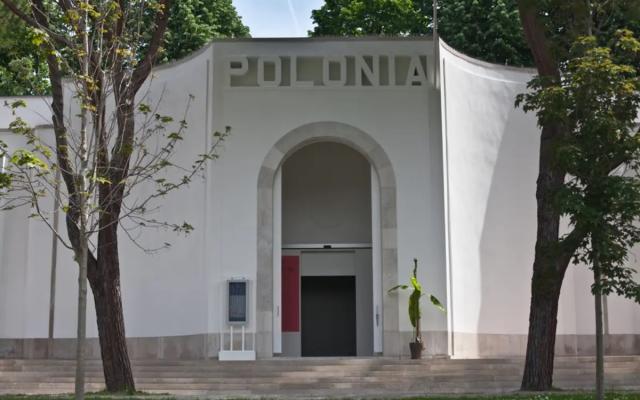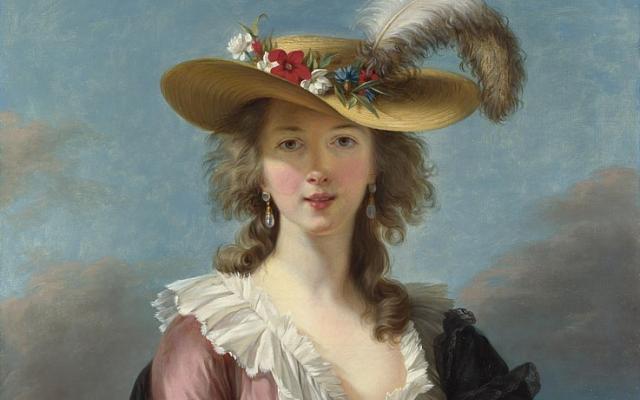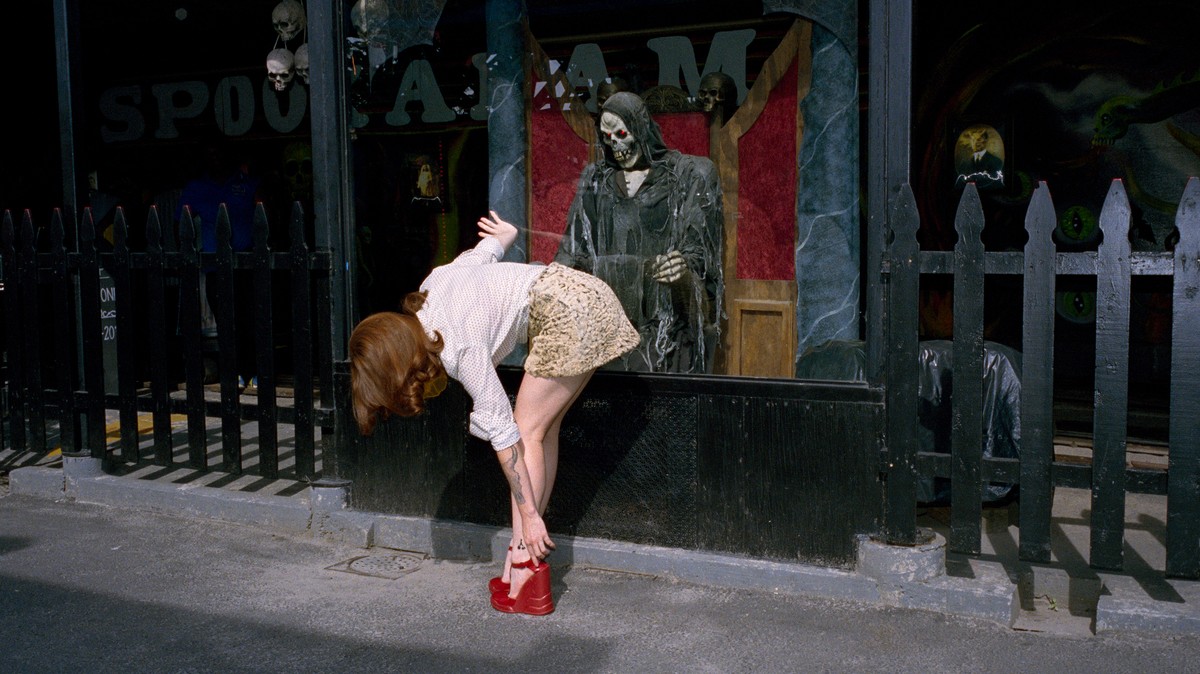Aldona
2013 - Film & Video (Film & Video)
13 minutes
Emilija Škarnulyte
In the video, the artist follows her grandmother, Aldona, during her daily walk through the Grutas Park in Lithuania. Founded ten years after the collapse of USSR, this privately-owned sculpture park features close to a hundred Soviet-era statues collected from all over the country. As similar statues were often taken down or destroyed in neighboring Soviet countries, the sculpture park became a unique yet controversial resource. Avoiding both museumification and destruction, the park offers an alternative destination for markers of a painful past. In the video, viewers witness Aldona groping for these monuments along the leafy forest road and gently caressing their surfaces to feel their cracks and comprehend their scale. With the statues no longer occupying places of prominence in city centers, Škarnulyte highlights their accessibility as Aldona interacts with them by running her hands across their surfaces. Aldona is revealed to be visually impaired, so holding, patting, and touching the monuments with her hands becomes her process of uncovering and comprehending the past through its physicality. In the spring of 1986, the nerves of Aldona’s eyes were poisoned, probably due to the Chernobyl Nuclear Plant explosion. The work reveals the importance of tactile and physical experiences of history, expanding cultural knowledge beyond visual manifestations, while addressing the complicated status of public monuments in regards to the histories they commemorate. Aldona is a highly personal work for the artist whose grandmother was very instrumental to her development as an artist.
Intertwining fiction with documentary, Emilija Škarnulyte’s videos and multimedia installations explore the psychological power that our environment holds over us, taking an anthropocentric view through the lens of her camera. Focusing on the invisible relations between the physical world and our social imaginary, her films have looked into geological ungrounding processes, for example the concept of geologic time and its influence on our relation with history; invisible architectures, such as the way violent conflicts inscribe themselves in the earth’s structure and vice versa, as well as larger systems of power. She is currently conducting research on a former military submarine site in Norway; built during the Cold War, now privatized, it is a strategic point in the oil industry.
Colors:
Related works sharing similar palette

© » KADIST
Shimabuku
2006For the two-channel work Asking the Repentistas – Peneira & Sonhador – to remix my octopus works Shimabuku asked two Brazilian street singers to compose a ballad about his previous works with octopi (in which he created traditional Japanese ceramic vessels to catch octopi, with a fisherman who took him on his boat to test them out as we can see on one of the channel)...

© » KADIST
Sara Eliassen
2014Sara Eliassen’s video work A Blank Slate (2014) employs cinematic effect to investigate the relationships between subjectivity, gaze, and memory...

© » KADIST
Firenze Lai
2013Central Station, Alignment, and Argument are “situation portraits” that present whimsical characters within distorted and troubling worlds...

© » ART & OBJECT
Artist Rejected from Venice Biennale Polish Pavilion Says He was Censored | Art & Object Skip to main content Subscribe to our free e-letter! Webform Your Email Address Role Art Collector/Enthusiast Artist Art World Professional Academic Country USA Afghanistan Albania Algeria American Samoa Andorra Angola Anguilla Antarctica Antigua & Barbuda Argentina Armenia Aruba Ascension Island Australia Austria Azerbaijan Bahamas Bahrain Bangladesh Barbados Belarus Belgium Belize Benin Bermuda Bhutan Bolivia Bosnia & Herzegovina Botswana Bouvet Island Brazil British Indian Ocean Territory British Virgin Islands Brunei Bulgaria Burkina Faso Burundi Cambodia Cameroon Canada Canary Islands Cape Verde Caribbean Netherlands Cayman Islands Central African Republic Ceuta & Melilla Chad Chile China Christmas Island Clipperton Island Cocos (Keeling) Islands Colombia Comoros Congo - Brazzaville Congo - Kinshasa Cook Islands Costa Rica Croatia Cuba Curaçao Cyprus Czechia Côte d’Ivoire Denmark Diego Garcia Djibouti Dominica Dominican Republic Ecuador Egypt El Salvador Equatorial Guinea Eritrea Estonia Eswatini Ethiopia Falkland Islands Faroe Islands Fiji Finland France French Guiana French Polynesia French Southern Territories Gabon Gambia Georgia Germany Ghana Gibraltar Greece Greenland Grenada Guadeloupe Guam Guatemala Guernsey Guinea Guinea-Bissau Guyana Haiti Heard & McDonald Islands Honduras Hong Kong SAR China Hungary Iceland India Indonesia Iran Iraq Ireland Isle of Man Israel Italy Jamaica Japan Jersey Jordan Kazakhstan Kenya Kiribati Kosovo Kuwait Kyrgyzstan Laos Latvia Lebanon Lesotho Liberia Libya Liechtenstein Lithuania Luxembourg Macao SAR China Madagascar Malawi Malaysia Maldives Mali Malta Marshall Islands Martinique Mauritania Mauritius Mayotte Mexico Micronesia Moldova Monaco Mongolia Montenegro Montserrat Morocco Mozambique Myanmar (Burma) Namibia Nauru Nepal Netherlands Netherlands Antilles New Caledonia New Zealand Nicaragua Niger Nigeria Niue Norfolk Island Northern Mariana Islands North Korea North Macedonia Norway Oman Outlying Oceania Pakistan Palau Palestinian Territories Panama Papua New Guinea Paraguay Peru Philippines Pitcairn Islands Poland Portugal Puerto Rico Qatar Romania Russia Rwanda Réunion Samoa San Marino Saudi Arabia Senegal Serbia Seychelles Sierra Leone Singapore Sint Maarten Slovakia Slovenia Solomon Islands Somalia South Africa South Georgia & South Sandwich Islands South Korea South Sudan Spain Sri Lanka St...

© » KADIST
Tanatchai Bandasak
2019Central Region by Tanatchai Bandasak is a meditation on materiality and time-based media centres on the mysterious, prehistoric ‘standing stones’ of Hintang in Northern Laos: little-studied megaliths which have survived thousands of years of political change and the cataclysmic carpet-bombing of Laos by the United States during the Cold War...

© » KADIST
Calderón & Piñeros (La Decanatura)
2015In Centro Espacial Satelital de Colombia (Colombian Satellite Space Center) , Calderón & Piñeros (La Decanatura) play tribute to two “stunning” satellite antennas installed in the small municipality of Chocontá where, in 1970, the Space Communications Center of Colombia was inaugurated...

© » ARTS EQUATOR
Between Worlds: Café Sarajevo, ATARA and No Place | ArtsEquator Thinking and Talking about Arts and Culture in Southeast Asia Articles Crispian Chan February 17, 2020 By Nabilah Said and Germaine Cheng (1,580 words, 7-minute read) What does it mean to be between worlds? To behold yet not belong? Three works – Café Sarajevo , ATARA and No Place – presented as part of M1 Singapore Fringe Festival 2020 ask these questions, of their audience and of themselves...

© » ART & OBJECT
Jackie Kennedy's Georgetown Mansion Is for Sale | Art & Object Skip to main content Subscribe to our free e-letter! Webform Your Email Address Role Art Collector/Enthusiast Artist Art World Professional Academic Country USA Afghanistan Albania Algeria American Samoa Andorra Angola Anguilla Antarctica Antigua & Barbuda Argentina Armenia Aruba Ascension Island Australia Austria Azerbaijan Bahamas Bahrain Bangladesh Barbados Belarus Belgium Belize Benin Bermuda Bhutan Bolivia Bosnia & Herzegovina Botswana Bouvet Island Brazil British Indian Ocean Territory British Virgin Islands Brunei Bulgaria Burkina Faso Burundi Cambodia Cameroon Canada Canary Islands Cape Verde Caribbean Netherlands Cayman Islands Central African Republic Ceuta & Melilla Chad Chile China Christmas Island Clipperton Island Cocos (Keeling) Islands Colombia Comoros Congo - Brazzaville Congo - Kinshasa Cook Islands Costa Rica Croatia Cuba Curaçao Cyprus Czechia Côte d’Ivoire Denmark Diego Garcia Djibouti Dominica Dominican Republic Ecuador Egypt El Salvador Equatorial Guinea Eritrea Estonia Eswatini Ethiopia Falkland Islands Faroe Islands Fiji Finland France French Guiana French Polynesia French Southern Territories Gabon Gambia Georgia Germany Ghana Gibraltar Greece Greenland Grenada Guadeloupe Guam Guatemala Guernsey Guinea Guinea-Bissau Guyana Haiti Heard & McDonald Islands Honduras Hong Kong SAR China Hungary Iceland India Indonesia Iran Iraq Ireland Isle of Man Israel Italy Jamaica Japan Jersey Jordan Kazakhstan Kenya Kiribati Kosovo Kuwait Kyrgyzstan Laos Latvia Lebanon Lesotho Liberia Libya Liechtenstein Lithuania Luxembourg Macao SAR China Madagascar Malawi Malaysia Maldives Mali Malta Marshall Islands Martinique Mauritania Mauritius Mayotte Mexico Micronesia Moldova Monaco Mongolia Montenegro Montserrat Morocco Mozambique Myanmar (Burma) Namibia Nauru Nepal Netherlands Netherlands Antilles New Caledonia New Zealand Nicaragua Niger Nigeria Niue Norfolk Island Northern Mariana Islands North Korea North Macedonia Norway Oman Outlying Oceania Pakistan Palau Palestinian Territories Panama Papua New Guinea Paraguay Peru Philippines Pitcairn Islands Poland Portugal Puerto Rico Qatar Romania Russia Rwanda Réunion Samoa San Marino Saudi Arabia Senegal Serbia Seychelles Sierra Leone Singapore Sint Maarten Slovakia Slovenia Solomon Islands Somalia South Africa South Georgia & South Sandwich Islands South Korea South Sudan Spain Sri Lanka St...

© » LE MONDE
Au Quai Branly, les pleureuses revisitées de Myriam Mihindou Cet article vous est offert Pour lire gratuitement cet article réservé aux abonnés, connectez-vous Se connecter Vous n'êtes pas inscrit sur Le Monde ? Inscrivez-vous gratuitement Article réservé aux abonnés Vue de l’exposition « Ilimb, l’essence des pleurs », de Myriam Mihindou, au Quai Branly, à Paris...

© » ART & OBJECT
10 Undersung Women Artists Across 500 Years | Art & Object Skip to main content Subscribe to our free e-letter! Webform Your Email Address Role Art Collector/Enthusiast Artist Art World Professional Academic Country USA Afghanistan Albania Algeria American Samoa Andorra Angola Anguilla Antarctica Antigua & Barbuda Argentina Armenia Aruba Ascension Island Australia Austria Azerbaijan Bahamas Bahrain Bangladesh Barbados Belarus Belgium Belize Benin Bermuda Bhutan Bolivia Bosnia & Herzegovina Botswana Bouvet Island Brazil British Indian Ocean Territory British Virgin Islands Brunei Bulgaria Burkina Faso Burundi Cambodia Cameroon Canada Canary Islands Cape Verde Caribbean Netherlands Cayman Islands Central African Republic Ceuta & Melilla Chad Chile China Christmas Island Clipperton Island Cocos (Keeling) Islands Colombia Comoros Congo - Brazzaville Congo - Kinshasa Cook Islands Costa Rica Croatia Cuba Curaçao Cyprus Czechia Côte d’Ivoire Denmark Diego Garcia Djibouti Dominica Dominican Republic Ecuador Egypt El Salvador Equatorial Guinea Eritrea Estonia Eswatini Ethiopia Falkland Islands Faroe Islands Fiji Finland France French Guiana French Polynesia French Southern Territories Gabon Gambia Georgia Germany Ghana Gibraltar Greece Greenland Grenada Guadeloupe Guam Guatemala Guernsey Guinea Guinea-Bissau Guyana Haiti Heard & McDonald Islands Honduras Hong Kong SAR China Hungary Iceland India Indonesia Iran Iraq Ireland Isle of Man Israel Italy Jamaica Japan Jersey Jordan Kazakhstan Kenya Kiribati Kosovo Kuwait Kyrgyzstan Laos Latvia Lebanon Lesotho Liberia Libya Liechtenstein Lithuania Luxembourg Macao SAR China Madagascar Malawi Malaysia Maldives Mali Malta Marshall Islands Martinique Mauritania Mauritius Mayotte Mexico Micronesia Moldova Monaco Mongolia Montenegro Montserrat Morocco Mozambique Myanmar (Burma) Namibia Nauru Nepal Netherlands Netherlands Antilles New Caledonia New Zealand Nicaragua Niger Nigeria Niue Norfolk Island Northern Mariana Islands North Korea North Macedonia Norway Oman Outlying Oceania Pakistan Palau Palestinian Territories Panama Papua New Guinea Paraguay Peru Philippines Pitcairn Islands Poland Portugal Puerto Rico Qatar Romania Russia Rwanda Réunion Samoa San Marino Saudi Arabia Senegal Serbia Seychelles Sierra Leone Singapore Sint Maarten Slovakia Slovenia Solomon Islands Somalia South Africa South Georgia & South Sandwich Islands South Korea South Sudan Spain Sri Lanka St...

© » ARTS EQUATOR
Organizers decry last-minute cancelation of Hanoi EDM festival (via Tuoi Tre News) | ArtsEquator Thinking and Talking about Arts and Culture in Southeast Asia Articles November 27, 2018 An EDM (electronic dance music) festival scheduled to take place just outside Hanoi from November 23 to 25 was asked to cancel only hours before its opening, despite sold tickets and foreign and local artists and volunteers already heading to the venue...

© » ARTEFUSE
Pipilotti Rist, Anj Smith and Guillermo Kuitca at Hauser & Wirth, NYC (Video) - ArteFuse PIPILOTTI RIST PRICKLING GOOSEBUMPS & A HUMMING HORIZON 9 NOVEMBER 2023 – 13 JANUARY 2024 NEW YORK, 22ND STREET ANJ SMITH DRIFTING HABITATIONS 9 NOVEMBER 2023 – 13 JANUARY 2024 NEW YORK, 22ND STREET GUILLERMO KUITCA PINTURA SIN MUROS 9 NOVEMBER 2023 – 13 JANUARY 2024 NEW YORK, 22ND STREET...








